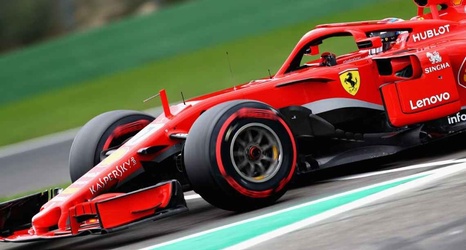Whichever way you look at it, the Belgian Grand Prix appears to be a nailed on one-stopper. The two softest compounds can be used to get to the flag, with a 16-lap stint on the super-softs followed by a 28-lap stint on the softs the most likely option for the top ten (who will all start on the red-striped tyre).
With a dry race the thoretical quickest pit-stop strategies predicted by Pirelli are as follows:
For those starting on Red SUPER-SOFT tyres:
For those starting on Yellow SOFT tyres:
ONE-STOPPER: One stint on soft for 25 laps + one stint on medium to the flag
A TWO-STOPPER: (Two stints on supersoft for 13+13 laps, then soft to the flag) would be more than 15 seconds slower
Depending on how well drivers manage the super-softs, they may be able to go longer than lap 16, but the soft proved to be a solid race tyre in practice and is likely to offer respectable pace throughout a stint of up to 30 laps.
